09 - 10 APRIL 1996 - RAPID CYCLOGENESIS: ANALYSIS FOR "SPECIAL INVESTIGATION": 09 APRIL 18.00 UTC TO 10 APRIL 00.00 UTC
by ZAMG
|
09 April 1996/18.00 UTC - Meteosat IR enhanced image
|
10 April 1996/00.00 UTC - Meteosat IR enhanced image
|
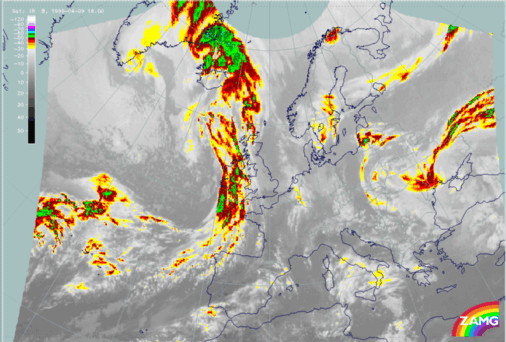
|
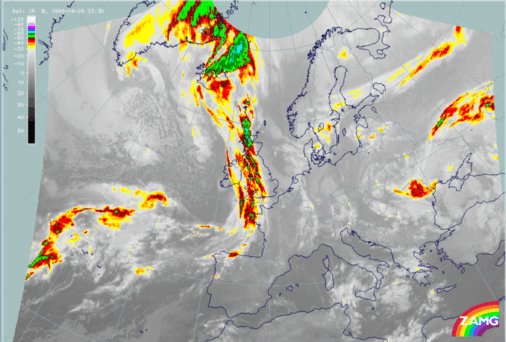
|
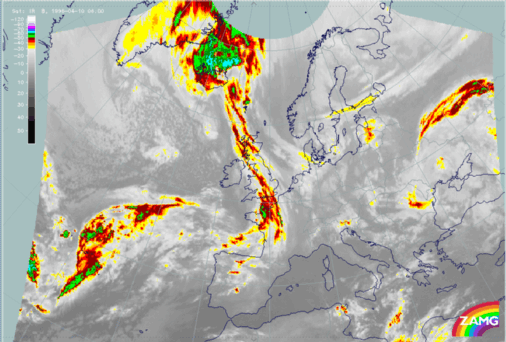
|
|
|
10 April 1996/06.00 UTC - Meteosat IR image
|
|
09 April 1996/18.00 UTC - Meteosat IR image; magenta: height contours 1000 hPa, green: positive vorticity advection (PVA) 500 hPa, red:
temperature advection - WA 1000 hPa
|
10 April 1996/00.00 UTC - Meteosat IR image; magenta: height contours 1000 hPa, green: positive vorticity advection (PVA) 500 hPa, red:
temperature advection - WA 1000 hPa
|
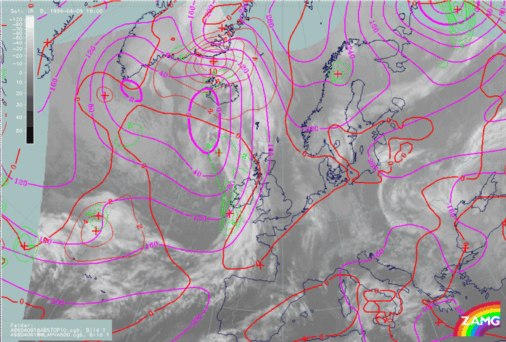
|
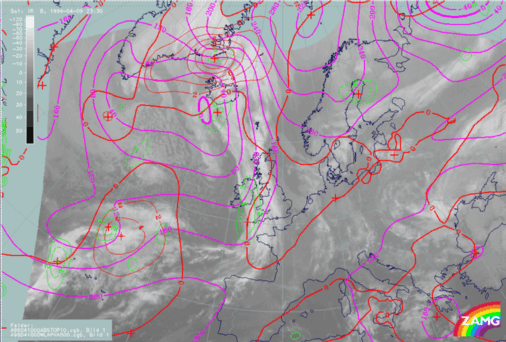
|
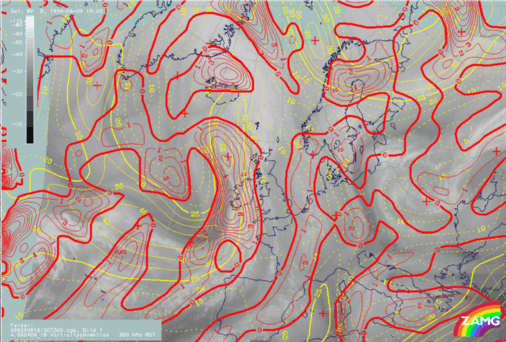
|
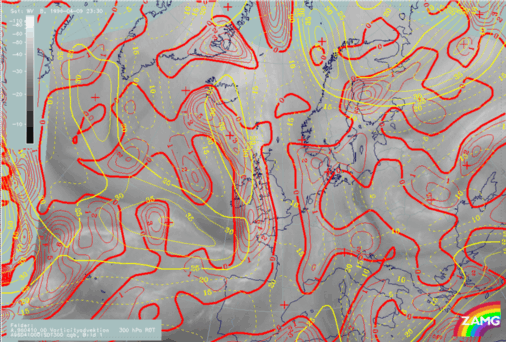
|
|
09 April 1996/19.00 UTC - Meteosat WV image; yellow: isotachs 300 hPa, red: positive vorticity advection (PVA) 300 hPa
|
10 April 1996/00.00 UTC - Meteosat WV image; yellow: isotachs 300 hPa, red: positive vorticity advection (PVA) 300 hPa
|
The model again shows a broad zone of high wind velocities (left and right image bottom) above the cloud head and does not separate between the northern and the southern oriented jet streak. The only indication by the model that two jet streaks exist can be found in the bulges of the isotachs within the area of the entrance region. The second superimposed parameter is the field of PVA at 300 hPa which shows two PVA maxima in the area of the right entrance region of both jet streaks (left image bottom). Compared with the coldest cloud tops, both maxima are shifted about two degrees too far to the west. At 00.00 UTC the jet streak and PVA within the right entrance region are less pronounced, which can also be seen by the lower (warmer) cloud tops.
|
09 April 1996/18.00 UTC - Meteosat WV image; cyan: potential vorticity 310K, red: isobars
|
10 April 1996/00.00 UTC - Meteosat WV image; cyan: potential vorticity 310K, red: isobars
|
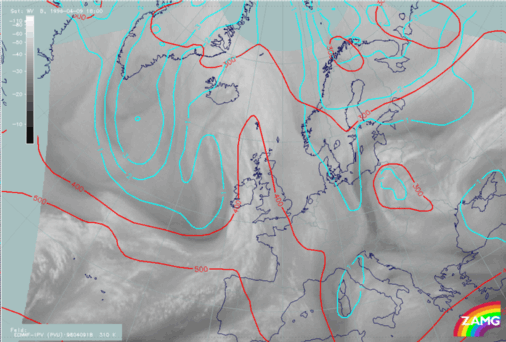
|
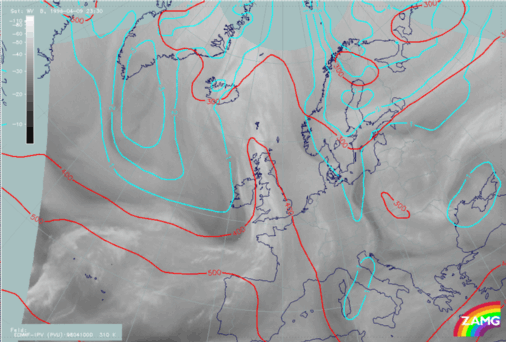
|

